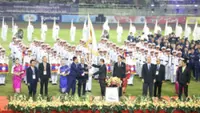SINGAPORE: In the ballroom of the five-star Shangri-La Singapore hotel, Anthony Tan celebrated a triumph for the country’s up-and-coming tech scene.
"Today we shine a spotlight on South-East Asia!” he told the adoring crowd. His company, Grab, the region’s answer to Uber, was about to make its stock market debut.





